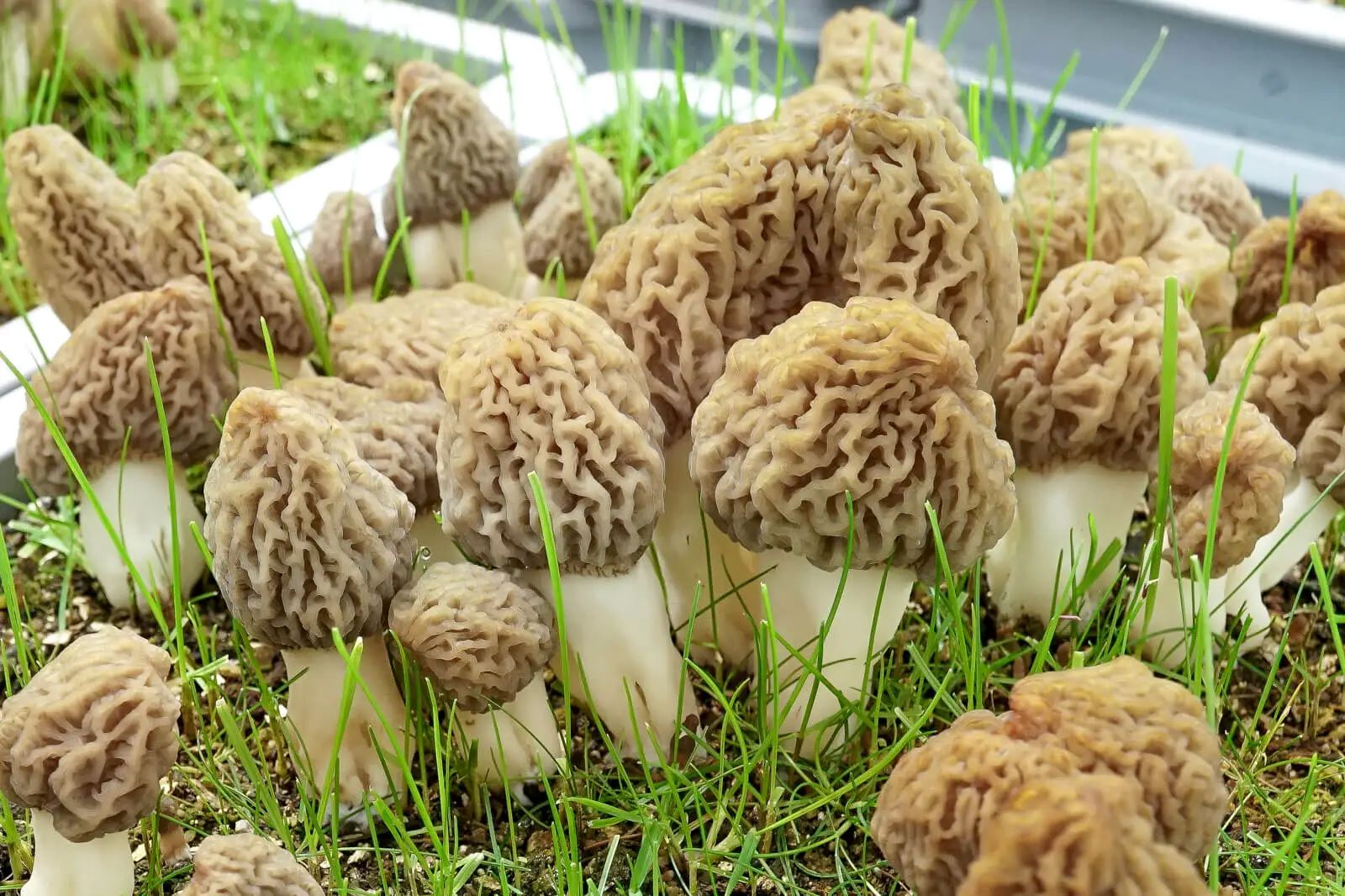

Articles
How To Store Morels
Modified: February 23, 2024
Learn the best tips and techniques for storing morels in this comprehensive collection of articles. Keep your prized mushrooms fresh and flavorful for longer.
(Many of the links in this article redirect to a specific reviewed product. Your purchase of these products through affiliate links helps to generate commission for Storables.com, at no extra cost. Learn more)
Introduction
Welcome to the world of morels, the beloved and elusive fungi known for their rich flavor and distinctive appearance. Whether you’re a seasoned forager or a curious food enthusiast, understanding how to properly store morels is essential to preserving their delicate flavor and texture.
Morels are prized for their earthy and nutty taste, which intensifies when cooked. They have a unique honeycomb-like cap that makes them easily recognizable in the wild. These mushrooms are highly sought after by chefs and mushroom lovers alike, making them a culinary treasure.
However, morels have a relatively short shelf life due to their high moisture content and delicate structure. Proper storage techniques are crucial to keep them fresh and flavorful for as long as possible. In this article, we will explore different methods for storing morels to help you extend their longevity and enjoy their delectable taste year-round.
Key Takeaways:
- Properly storing morels is essential for preserving their delicate flavors and textures, allowing you to enjoy these prized mushrooms year-round. Choose the best storage method and savor the unique taste of morels long after the foraging season ends.
- Experiment with different culinary preparations using your stored morels to unlock their potential in enhancing dishes with their unique earthy and nutty notes. Properly stored morels can elevate your culinary creations and impress your taste buds.
Read more: How To Store Morels In Refrigerator
Understanding Morels
Before delving into the various storage methods, it’s important to have a basic understanding of morels. Morels belong to the Morchella genus and are classified as edible mushrooms. They are primarily found in the spring season, typically appearing in forests, woodlands, and sometimes even in urban areas.
Morels have a distinct appearance with their cone-shaped caps and unique textured surface. The cap is composed of small ridges and depressions that resemble a honeycomb. The color of morels can range from pale yellow to dark brown, depending on the species and maturity. It’s crucial to properly identify morels and distinguish them from other potentially poisonous mushrooms before harvesting or consuming them.
In addition to their exquisite flavors, morels are also rich in nutrients. They are a good source of protein, vitamins (such as vitamin D), minerals (such as iron and potassium), and dietary fiber. However, it’s important to note that some individuals may be allergic to mushrooms, so it is advisable to consume them in moderation and seek medical advice if needed.
Harvesting morels in the wild can be a thrilling and rewarding experience. However, it requires a certain level of knowledge and experience. If you’re a beginner, it’s always recommended to go foraging with an experienced guide or join a local mushroom foraging group to ensure safe and responsible harvesting.
Remember, the sustainability and preservation of morel populations are crucial. When foraging, follow the principles of ethical and responsible harvesting. Leave some morels behind to allow for spore dispersal, which helps ensure the continued growth of these magnificent mushrooms in their natural habitat.
Now that we have a better understanding of morels, let’s explore the different storage methods to preserve their unique flavors and textures.
Harvesting Morels
Harvesting morels is an exciting and rewarding endeavor for mushroom enthusiasts. However, it’s essential to follow proper techniques to ensure a successful harvest and to maintain the integrity of the mushrooms.
The prime season for morel hunting varies depending on your geographical location, but it generally occurs in the spring. These elusive mushrooms tend to grow in areas with specific soil and environmental conditions, such as moist and alkaline soil, and near certain tree species like ash, elm, and oak.
When searching for morels, keep an eye out for areas with decaying organic matter, such as fallen leaves, decomposing logs, or dead trees. Morels often thrive in these types of environments, so focus your search in these areas.
When you find a morel, carefully harvest it by gently grasping the base of the stem and gently twisting it to remove it from the ground. It’s crucial to avoid damaging the delicate cap and stem as they are susceptible to bruising. A small knife or mushroom foraging tool can also be used to cut the stem if preferred.
It’s important to note that morels can have look-alikes, some of which can be toxic or even deadly. Always be sure of your identification before consuming any wild mushroom. If you’re unsure about the authenticity of your find, consult with an experienced mycologist or use a reliable field guide for morel identification.
While harvesting morels, it’s also crucial to be mindful of the environment. Avoid over-harvesting and only take what you intend to use. This allows for the sustainable growth of morel populations and preserves their natural habitat for future generations.
Once you’ve successfully harvested your morels, it’s time to prepare them for storage or immediate consumption. Next, we’ll explore the important steps of cleaning morels to ensure their quality and flavor.
Cleaning Morels
Cleaning morels is a crucial step in their preparation, as it helps remove any dirt, debris, or insects that may be clinging to the mushrooms. Proper cleaning ensures that the morels are safe to eat and enhances their overall flavor and texture.
It’s important to note that morels have a unique structure with their honeycomb-like caps. This can make them prone to trapping dirt and other particles, so thorough cleaning is essential.
To clean morels, begin by gently brushing off any visible dirt or debris using a soft-bristle brush or a mushroom-specific brush. This will help remove loose particles without damaging the delicate surface of the mushroom.
Next, inspect the morels carefully, paying close attention to their hollow stem. Sometimes small insects may take residence within the stem or cap. If you find any insects, gently shake or tap the morels to dislodge them. You can also make a small incision at the base of the stem to check for any hidden insects. If you find any, carefully remove them using a toothpick or small knife.
Some foragers prefer to soak their morels in cold water to further clean them. However, this method should be done with caution, as morels are highly absorbent and can become waterlogged, compromising their flavor and texture.
If you prefer to soak your morels, do so briefly in a bowl of cold water. Swirl them gently to dislodge any remaining dirt or insects. It’s important to note that soaking them for too long or using warm water can cause the mushrooms to become mushy and lose their desired texture.
After soaking, remove the morels from the water and pat them dry using a clean kitchen towel or paper towels. Make sure to handle the mushrooms gently to avoid damaging them.
Once cleaned and dried, your morels are ready for storage or immediate use in various culinary preparations. In the next sections, we will explore different storage options that will help extend the shelf life of your morels while preserving their unique flavors.
Storage Options for Morels
Proper storage is key to prolonging the shelf life of morels and preserving their unique flavors. There are several storage methods you can use, depending on your preference and the intended use of the morels. Let’s explore some of the most common storage options for morels:
- Storing Morels in the Refrigerator: One of the simplest ways to store morels is in the refrigerator. Before refrigerating, make sure the morels are completely dry. Place them in a paper bag or a breathable container, such as a mesh bag or a container with vented lids. This allows for air circulation, preventing moisture buildup that can cause the mushrooms to become slimy. Morels can be stored in the refrigerator for up to 5 days, but it’s best to consume them as soon as possible for optimal flavor.
- Storing Morels in the Freezer: Freezing morels is an excellent option for long-term storage. Clean and dry the morels thoroughly before freezing. For smaller morels, you can freeze them directly. For larger morels, it’s recommended to slice them to ensure even freezing. Place the morels in airtight freezer bags or containers, removing as much air as possible to prevent freezer burn. Frozen morels can be stored for up to 6 months. When ready to use, thaw them in the refrigerator before cooking.
- Drying Morels for Long-term Storage: Drying is a traditional method of preserving morels. To dry morels, gently clean and pat them dry. Slice them lengthwise to expose the inner flesh and aid in the drying process. Arrange the sliced morels in a single layer on a drying rack or a baking sheet lined with parchment paper. Place the tray in a cool, well-ventilated area away from direct sunlight. Allow the morels to air dry for several days or until they become crisp and brittle. Store the dried morels in airtight containers in a cool, dark place. Properly dried morels can be stored for up to a year.
- Using Vacuum Seal Bags for Morel Storage: Vacuum sealing is an effective method for preserving the freshness of morels. Clean and dry the morels thoroughly before sealing them in vacuum bags. The vacuum sealing process removes air, preventing oxidation and moisture accumulation. This helps preserve the flavor and texture of the morels. Frozen or vacuum-sealed morels can be stored for an extended period, up to a year or more.
- Storing Morels in Salt or Brine: Another method of preserving morels is by storing them in salt or brine. Clean and dry the morels, then layer them in jars with a generous amount of salt or immerse them in a brine solution. The salt or brine helps inhibit bacterial growth and extends the shelf life of the morels. Store the jars in a cool, dark place, and the preserved morels can be enjoyed for several months.
- Storing Morels in Oil or Vinegar: Morels can also be stored in oil or vinegar. Clean and dry the morels thoroughly, then gently sauté them in a little oil or vinegar to help preserve their flavors. Allow the morels to cool before transferring them to a clean, airtight jar. Cover the morels completely with oil or vinegar, ensuring they are fully submerged. Store the jar in the refrigerator and use the preserved morels within a few weeks.
Each storage method offers its own advantages, so choose the one that best suits your needs and preferences. Regardless of the method you choose, it’s crucial to ensure the morels are clean, dry, and stored in airtight containers to prevent moisture buildup and maintain their quality.
Now that you’re familiar with the various storage options, let’s explore each method in detail to help you make an informed decision for preserving your morels.
Read more: How To Store Morel Mushrooms
Storing Morels in the Refrigerator
One of the simplest and most common methods for storing morels is in the refrigerator. This method allows you to keep the morels fresh for a short period, typically up to 5 days. Storing morels in the refrigerator requires proper handling and temperature control to maintain their quality and prevent spoilage.
Before refrigerating morels, it’s important to ensure they are completely dry. Excess moisture can lead to the growth of mold or bacterial growth, causing the morels to spoil quickly. To dry the morels, gently pat them dry with a clean kitchen towel or paper towels.
Once the morels are dry, place them in a breathable container, such as a paper bag or a mesh bag. This allows for air circulation and helps prevent moisture buildup. You can also use vented containers with lids that allow for airflow. Avoid using plastic bags or containers that can trap moisture, which can cause the morels to become slimy.
It’s important to store the morels in the main compartment of the refrigerator and avoid placing them in the crisper drawer. The crisper drawer is designed to maintain high humidity, which can be detrimental to morels’ delicate structure. The temperature in the refrigerator should be set between 35-40°F (1.7-4.4°C) to slow down the deterioration process.
It’s best to consume morels as soon as possible for optimal freshness and flavor. If you don’t plan on using them immediately, you can extend their shelf life by refrigerating them. However, keep in mind that morels will gradually lose their flavor and texture over time.
When you’re ready to use the refrigerated morels, inspect them for any signs of spoilage. If they appear slimy, have a foul odor, or show visible signs of mold, it’s best to discard them as they may no longer be safe to consume.
Proper storage in the refrigerator can help prolong the freshness of morels and allow you to enjoy their unique flavor for a short period. However, if you’re looking for long-term storage options, consider alternative methods such as freezing or drying morels.
In the next sections, we will explore these methods in detail to help you make the best choice for storing your morels based on your needs and preferences.
Storing Morels in the Freezer
Freezing morels is an excellent method for extending their shelf life and preserving their flavors for an extended period. Freezing is a convenient option that allows you to enjoy morels throughout the year, even when they are out of season. Proper preparation and storage techniques are essential to maintain the quality of the morels during freezing.
Before freezing morels, it’s important to clean them thoroughly. Gently brush off any dirt or debris using a soft-bristle brush or a mushroom-specific brush. Inspect the morels for any insects and remove them if necessary. Once cleaned, allow the morels to dry completely before proceeding with the freezing process.
For smaller morels, you can freeze them whole. For larger morels, it’s recommended to slice them lengthwise into smaller pieces. Slicing the morels helps facilitate even freezing and ensures that they thaw more uniformly when you’re ready to use them.
Next, arrange the cleaned and sliced morels in a single layer on a baking sheet lined with parchment paper. Make sure the morels are not touching each other, as this will prevent them from freezing together into a clump.
Place the baking sheet with the morels in the freezer and allow them to freeze for a few hours until they are firm. Freezing them individually before packaging helps prevent them from sticking together, making it easier to remove the desired amount of morels later without having to thaw the entire batch.
Once the morels are frozen and firm, transfer them to airtight freezer bags or containers. Remove as much air as possible from the bags or containers before sealing them, as excess air can cause freezer burn and affect the quality of the morels.
Label the bags or containers with the date of freezing to keep track of their freshness. Frozen morels can be stored in the freezer for up to 6 months. However, for optimal quality and flavor, it’s best to use them within 3-4 months.
When you’re ready to use the frozen morels, remove the desired amount from the freezer and thaw them in the refrigerator overnight. Avoid thawing them at room temperature, as rapid thawing can cause the morels to become mushy.
Once thawed, you can use the morels in various culinary applications, such as sautéing, stir-frying, or incorporating them into soups, stews, and sauces.
Freezing morels is a convenient and effective method for long-term storage. It allows you to enjoy the unique flavors of morels even when they are not in season. Properly frozen and thawed morels can maintain their flavors and textures, providing you with a taste of fresh morels year-round.
In the next sections, we will explore alternative storage methods, such as drying morels and preserving them in oil or vinegar, to further enhance the versatility and longevity of your morels.
Drying Morels for Long-term Storage
Drying morels is a traditional and effective method of preserving these prized mushrooms for long-term storage. Dried morels can be used in various dishes and retain a concentrated flavor that adds a delightful earthy note to your culinary creations. Properly drying morels is crucial to maintain their quality and ensure their long-term storage.
To start the drying process, gently clean the morels by brushing off any dirt or debris using a soft-bristle brush or a mushroom-specific brush. Take care to remove any insects or unwanted particles that may be clinging to the mushrooms.
After cleaning, it’s important to prepare the morels for drying by slicing them. Cut the morels lengthwise to expose the inner flesh and facilitate the drying process. Slicing the morels also helps ensure they dry evenly and avoid any moisture pockets within the mushrooms.
Once sliced, arrange the morels in a single layer on a drying rack or a baking sheet lined with parchment paper. Make sure the morels are not touching each other to allow for proper air circulation.
Place the drying rack or baking sheet in a cool, well-ventilated area away from direct sunlight. You can also use a food dehydrator set to a low temperature, specifically designed for drying fruits, vegetables, and mushrooms.
Air drying typically takes several days, and the exact time required will depend on the humidity level in your environment. The morels should feel dry and brittle to the touch when they are fully dehydrated. Be patient during the drying process to ensure that the morels are dried thoroughly, as any remaining moisture can lead to spoilage during storage.
Once the morels are completely dried, store them in airtight containers, such as glass jars with tight-fitting lids or vacuum-sealed bags. Make sure the containers are clean and dry before adding the dried morels to prevent moisture absorption. Store the containers in a cool, dark, and dry place, such as a pantry or cupboard.
Dried morels can be stored for up to a year or longer if properly dried and stored in optimal conditions. However, it’s best to consume them within the first year to enjoy the fullest flavors and aromas.
To use dried morels, rehydrate them before cooking. Place the desired amount of dried morels in a bowl and cover them with hot water or broth. Allow the morels to soak for about 20-30 minutes or until they become plump and tender. Reserve the soaking liquid, which can be used to infuse dishes with a rich mushroom flavor.
Dried morels add depth and complexity to a wide range of recipes, such as risottos, sauces, soups, and pasta dishes. Their concentrated flavor makes them an excellent complement to meats, seafood, and vegetarian dishes.
By drying morels, you can enjoy these flavorful mushrooms all year round and elevate your culinary creations with their unique taste. In the next section, we will explore another preservation method – storing morels in oil or vinegar – to further enhance the versatility and storage options for your morels.
Store morels in a paper bag in the refrigerator. Avoid storing them in a plastic bag, as it can cause them to become slimy. Change the paper bag every 1-2 days to maintain freshness.
Using Vacuum Seal Bags for Morel Storage
Vacuum sealing is a highly effective method for preserving the freshness and quality of morels. By removing the air from the storage bags, vacuum sealing creates airtight conditions that help prevent oxidation, freezer burn, and moisture buildup. This preservation technique allows you to store morels for an extended period, maintaining their flavors and textures.
To begin, ensure that the morels are thoroughly cleaned and completely dry. Any moisture present can cause the morels to spoil during storage. Gently brush off any dirt or debris using a soft-bristle brush or a mushroom-specific brush.
If the morels are large, you may choose to slice them lengthwise to ensure even freezing and to make them easier to portion later. However, if you prefer to keep them whole, they can be vacuum sealed as is.
Choose high-quality vacuum seal bags that are specifically designed for food preservation. These bags are durable, puncture-resistant, and have a reliable sealing mechanism. Place the cleaned and dried morels into the bags, leaving some space at the top for sealing.
Now, it’s time to vacuum seal the bags. Follow the instructions of your vacuum sealing machine for proper usage. Place the open end of the bag into the machine, ensuring it is positioned securely for a tight seal. Activate the vacuum sealing process, allowing the machine to remove the air from the bag and seal it shut.
Once the bags are sealed, check for any air leakage or imperfect seals. It’s important to ensure that all bags are properly sealed to maintain the airtight environment necessary for optimal storage.
Label the bags with the date of sealing to keep track of their freshness. Store the vacuum-sealed bags in the freezer for long-term storage. The sealed bags protect the morels from freezer burn while maintaining their flavors and textures for an extended period, typically up to a year or more.
When you’re ready to use the vacuum-sealed morels, remove the desired amount from the freezer and thaw them in the refrigerator overnight. The vacuum-sealed packaging helps prevent moisture loss during thawing, preserving the quality of the morels.
Once thawed, the morels can be used in various culinary preparations. Sauté them as a side dish, incorporate them into sauces or soups, or use them as a flavor enhancer for risottos and pasta dishes. The vacuum-sealed morels retain their unique flavors and textures, allowing you to enjoy the taste of fresh morels even when they are out of season.
Vacuum sealing provides a reliable and convenient storage option for morels, ensuring that they stay fresh and flavorful for an extended period. In the following section, we will explore another method of preserving morels – storing them in salt or brine.
Read more: How To Store Morels Overnight
Storing Morels in Salt or Brine
Storing morels in salt or brine is a traditional preservation method that adds a unique flavor and extends the shelf life of these prized mushrooms. The salt or brine creates an inhospitable environment for bacteria and helps maintain the texture and flavor of the morels over time. This method provides a wonderful way to enjoy morels all year round.
To begin, ensure that the morels are thoroughly cleaned and completely dry. Cleaning the morels helps remove any dirt or debris they may have picked up during the harvesting process. Gently brush off any visible dirt using a soft-bristle brush or a mushroom-specific brush.
For storing morels in salt, use a clean, dry jar with a tightly fitting lid. Layer the cleaned morels in the jar, adding a generous amount of salt between each layer. Make sure the morels are completely covered with salt. The salt acts as a natural preservative and helps inhibit the growth of bacteria. Seal the jar tightly and store it in a cool, dark place away from direct sunlight.
If you prefer to store morels in brine, prepare a basic brine solution by dissolving salt in water. The typical ratio for a brine solution is 1 cup of salt to 1 gallon of water. Bring the water to a boil, add the salt, and stir until it dissolves completely. Let the brine cool to room temperature before proceeding.
Once the brine solution is ready, place the cleaned morels in a clean, dry jar. Pour the brine over the morels, ensuring they are completely submerged. You can use a weight, such as a small plate or a glass weight, to keep the morels submerged in the brine. Seal the jar tightly and store it in a cool, dark place.
Both salt and brine help preserve the morels by creating an environment that inhibits microbial growth. The salt or brine-infused morels can be stored for several months in a cool, dark place. However, it’s recommended to consume them within the first few months for the best flavor and quality.
When you’re ready to use the morels, remove the desired amount from the jar and rinse them thoroughly to remove excess salt or brine. Soak the morels for a few minutes in fresh water to reduce their saltiness, if desired. The preserved morels can be used in various dishes, such as stews, sauces, or as a flavorful addition to omelets and pasta dishes.
Storing morels in salt or brine not only extends their shelf life but also adds a unique flavor depth to the mushrooms. Experiment with different levels of saltiness or even spices and herbs in the brine to create your preferred flavor profile. In the following section, we will explore another method of preserving morels – storing them in oil or vinegar.
Storing Morels in Oil or Vinegar
Storing morels in oil or vinegar is a wonderful way to enhance their flavors and preserve them for an extended period. This method not only preserves the morels but also infuses them with the essence of the oil or vinegar, resulting in a distinctive and flavorful ingredient for your culinary creations.
To start, ensure that the morels are thoroughly cleaned and completely dry. Gently brush off any dirt or debris using a soft-bristle brush or a mushroom-specific brush.
If you’ll be storing the morels in oil, it’s best to sauté them briefly first to partially cook them. Heat a small amount of oil in a skillet and gently sauté the morels over medium heat until they become slightly softened. Allow the sautéed morels to cool completely before transferring them to a clean, dry jar.
If you prefer to store the morels in vinegar, skip the sautéing step and proceed with the cleaning and drying process.
Once the sautéed (or raw) morels are cooled and dry, place them into the jar, ensuring they fit snugly. Cover the morels completely with either oil or vinegar, making sure they are fully submerged to prevent any exposure to air.
For storing morels in oil, choose a high-quality oil such as extra virgin olive oil or a neutral oil like grapeseed oil. The oil adds richness to the morels and helps preserve their flavors. Seal the jar tightly and store it in the refrigerator. The oil-infused morels can be stored for several weeks to a few months, depending on the freshness of the oil used.
For storing morels in vinegar, you can use a variety of vinegars such as white wine vinegar, apple cider vinegar, or balsamic vinegar. Different vinegars will impart distinct flavors to the morels. Seal the jar tightly and store it in the refrigerator. The vinegar-infused morels can be stored for several weeks to a few months, depending on the acidity and freshness of the vinegar used.
When you’re ready to use the preserved morels, simply remove them from the jar and rinse them thoroughly to remove any excess oil or vinegar. The oil- or vinegar-infused morels can be used in a variety of dishes, such as salads, pasta, pizzas, or as a flavorful addition to cooked meats and vegetables.
Storing morels in oil or vinegar not only preserves their flavors but also creates an infusion that adds depth and complexity to your dishes. Experiment with different types of oils and vinegars to create unique flavor combinations. In the next section, we will explore another method of preserving morels – storing them in alcohol.
Storing Morels in Alcohol
Storing morels in alcohol is a unique preservation method that infuses the mushrooms with the flavors of the chosen spirit. This method not only helps extend the shelf life of morels but also creates an exquisite ingredient that can be used in various culinary creations.
To begin, ensure that the morels are thoroughly cleaned and completely dry. Gently brush off any dirt or debris using a soft-bristle brush or a mushroom-specific brush.
Choose a high-quality spirit with a flavor profile that complements the morels. Common choices include brandy, whiskey, vodka, or sherry. The alcohol not only helps preserve the morels but also imparts its unique flavors, enhancing their culinary potential.
Place the cleaned and dried morels into a clean, dry jar, ensuring they fit snugly. Pour the chosen alcohol over the morels, making sure they are fully submerged. The alcohol acts as a natural preservative and helps prevent bacterial growth while infusing the mushrooms with its distinct flavors.
Seal the jar tightly and store it in a cool, dark place away from direct sunlight. The alcohol-infused morels can be stored for several months, allowing them to develop their flavors over time.
The preserved morels can be used in a variety of dishes, such as sauces, gravies, stews, or as a flavorful addition to risottos, pastas, or even cocktails. The alcohol not only imparts its unique taste but also helps tenderize and enhance the flavors of the morels.
When using the alcohol-infused morels in recipes, you can also incorporate some of the infused alcohol to further enhance the flavor profile of the dish. Be mindful of the strength of the alcohol and adjust the amount accordingly to suit your taste preferences.
It’s important to note that the alcohol-infused morels are intended for culinary use and should be consumed responsibly. The alcohol used for preserving the morels does not evaporate during cooking, so it’s essential to consider any potential alcohol sensitivities or dietary restrictions.
Storing morels in alcohol provides an exciting way to preserve these prized mushrooms while infusing them with unique flavors. Experiment with different spirits to create your preferred flavor combinations and elevate your culinary creations. In the next section, we will explore another method of preserving morels – creating a mushroom preserve.
Storing Morels in a Mushroom Preserve
Creating a mushroom preserve is a delightful and versatile method of storing morels. This preservation technique involves cooking the morels with a combination of flavorful ingredients, such as herbs, spices, and a suitable liquid, to create a flavorful preserve that can be enjoyed for an extended period.
To begin, clean the morels thoroughly by gently brushing off any dirt or debris using a soft-bristle brush or a mushroom-specific brush. Take care to remove any insects that may be clinging to the mushrooms.
Prepare a combination of ingredients to infuse the morels with flavors. Common additions to a mushroom preserve include herbs like thyme, rosemary, or bay leaves, spices such as black pepper or cloves, and a liquid component such as vinegar or wine. Choose ingredients that complement the natural flavors of the morels.
In a suitable saucepan or skillet, heat a small amount of oil or butter. Add the cleaned morels and sauté them over medium heat until they start to release their moisture and become slightly softened. This step helps enhance the flavors and textures of the morels in the final preserve.
Once the morels are sautéed, add your chosen flavoring ingredients. This can include herbs, spices, and the liquid component such as vinegar or wine. Use a combination that suits your taste preferences and enhances the earthy flavors of the morels.
Simmer the mixture over low heat, allowing the flavors to meld and infuse into the morels. Stir occasionally to prevent sticking or burning. The cooking time will vary depending on the desired consistency and the specific recipe you’re following, but it generally takes about 30 minutes to an hour for the flavors to develop and the liquid to reduce.
Once the mushroom preserve has reached your desired consistency, remove it from the heat and allow it to cool completely. Transfer the preserve into clean, airtight jars, ensuring the morels are fully submerged in the liquid. Seal the jars tightly and store them in a cool, dark place, such as a pantry or cupboard.
The mushroom preserve can be stored for several months, and the flavors will continue to develop over time. The preserved morels can be used in various dishes, such as sauces, spreads, or as a topping for pizzas or bruschetta. The flavor-infused liquid can also be used to enhance your cooking, adding depth and complexity to your recipes.
When using the mushroom preserve, ensure to handle it with clean utensils and avoid cross-contamination. If any signs of spoilage, such as mold or an off odor, are detected, discard the preserve immediately.
Storing morels in a mushroom preserve is a delightful way to enjoy their flavors throughout the year. Experiment with different combinations of herbs, spices, and liquids to create your own unique mushroom preserve that will elevate your culinary creations.
Read more: How To Store Morels For A Few Days
Tips for Proper Morel Storage
Proper storage is essential for maintaining the freshness, flavor, and quality of morels. Follow these tips to ensure that your morels stay in optimal condition for as long as possible:
- Clean and dry thoroughly: Before storing, clean the morels gently to remove any dirt or debris, and then ensure they are completely dry. Excess moisture can lead to spoilage, so proper drying is crucial.
- Choose the right storage method: Consider your needs and preferences when selecting a storage method. Options include refrigeration, freezing, drying, vacuum sealing, storing in salt or brine, or preserving in oil, vinegar, alcohol, or as a mushroom preserve. Choose a method that aligns with the intended use and desired longevity of your morels.
- Utilize airtight containers: To prevent moisture buildup and maintain freshness, store morels in airtight containers. This helps preserve their delicate textures and flavors. Use jars with tight-fitting lids or vacuum-seal bags for optimal results.
- Label and date: Properly label your storage containers with the date of storage. This allows you to keep track of the freshness of your morels and prioritize their use according to storage duration.
- Store in proper conditions: Choose storage areas that are cool, dark, and dry to maintain the quality of morels. Refrigerate or freeze when necessary, depending on the storage method chosen.
- Monitor for spoilage: Regularly check stored morels for any signs of spoilage such as mold, sliminess, off odors, or discoloration. If any spoilage is detected, discard the affected morels immediately to avoid contamination of other stored mushrooms.
- Practice responsible harvesting: When foraging for morels, be mindful of sustainability practices. Avoid over-harvesting by only taking what you need. Leave some morels in their natural habitat for spore dispersal and to ensure the continuation of healthy morel populations.
- Use stored morels in a timely manner: While proper storage methods can help extend their shelf life, it’s best to use your stored morels within a reasonable timeframe. The flavor and texture of morels may degrade over time, so it’s ideal to consume them sooner rather than later.
- Experiment with recipes: Get creative and explore different culinary preparations for your stored morels. Use them in sauces, soups, pasta dishes, stews, or as flavorful additions to various recipes. The unique taste of morels can enhance any dish with their earthy and nutty flavors.
By following these tips, you can maximize the storage life and enjoyment of your morels, ensuring that you can savor their exquisite flavors long after the foraging season has ended.
Remember, storing morels properly is crucial for preserving their unique qualities. Choose the most suitable method for your needs, and appreciate the delectable flavors of morels throughout the year.
Conclusion
Properly storing morels is crucial for preserving their delicate flavors and textures, allowing you to enjoy these prized mushrooms even when they are out of season. Whether you choose to refrigerate, freeze, dry, vacuum seal, store in salt or brine, preserve in oil or vinegar, or create a mushroom preserve, each method offers its own unique benefits and applications.
Understanding morels and their growth patterns is essential for successful foraging, while proper cleaning techniques ensure the removal of any dirt, debris, or insects. By utilizing the various storage methods outlined in this article, you can extend the shelf life of morels and explore their incredible flavors year-round.
Remember to follow best practices for responsible harvesting and sustainable foraging to preserve morel populations for future generations. Leave some morels behind to allow for spore dispersal and the continued growth of these magnificent mushrooms.
Experiment with different culinary preparations using your stored morels to unlock their potential in enhancing dishes with their unique earthy and nutty notes. From sauces and soups to pastas and stews, morels can elevate your culinary creations and impress your taste buds.
By following the tips for proper morel storage, such as choosing airtight containers, labeling and dating, monitoring for spoilage, and utilizing suitable storage conditions, you can ensure the quality and freshness of your preserved morels for as long as possible.
Whether you’re a seasoned forager or an enthusiastic food lover, proper morel storage allows you to relish the flavors of these elusive mushrooms long after the foraging season ends. So, gather your morels, select your preferred storage method, and embark on a flavorful journey as you savor the remarkable taste of morels throughout the year.
Frequently Asked Questions about How To Store Morels
Was this page helpful?
At Storables.com, we guarantee accurate and reliable information. Our content, validated by Expert Board Contributors, is crafted following stringent Editorial Policies. We're committed to providing you with well-researched, expert-backed insights for all your informational needs.
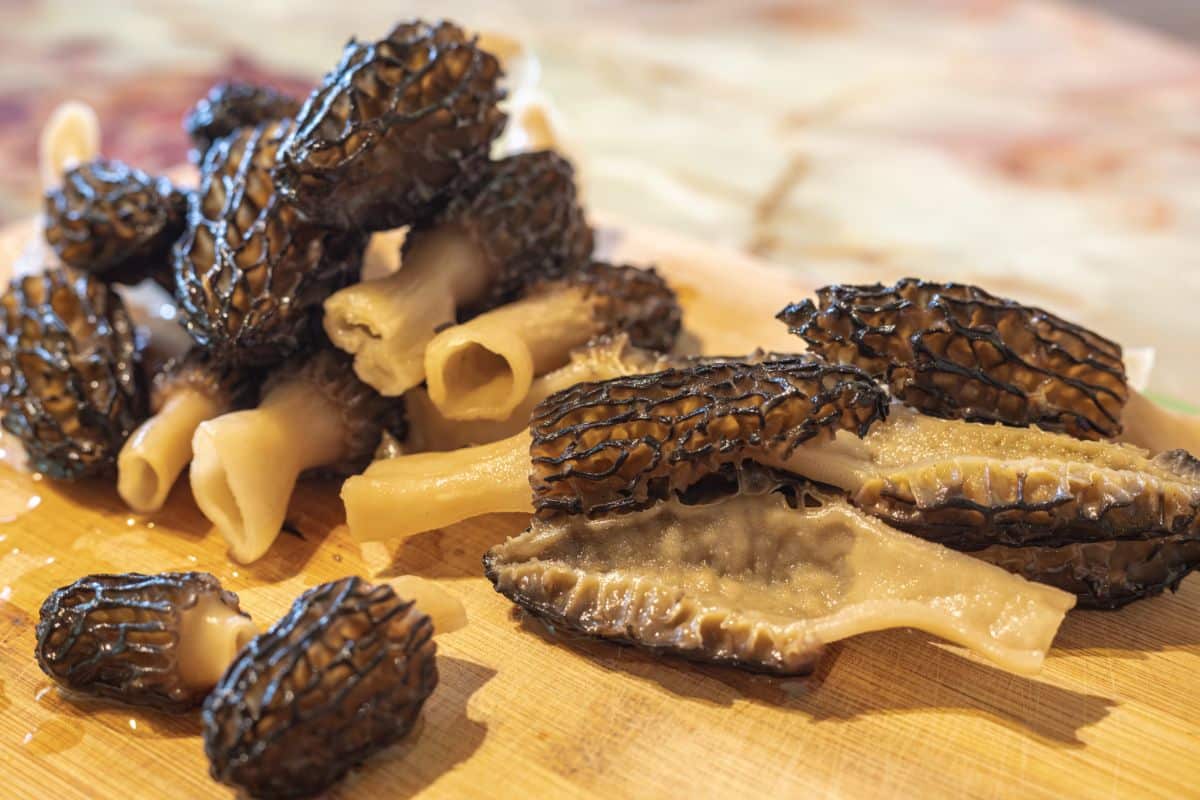
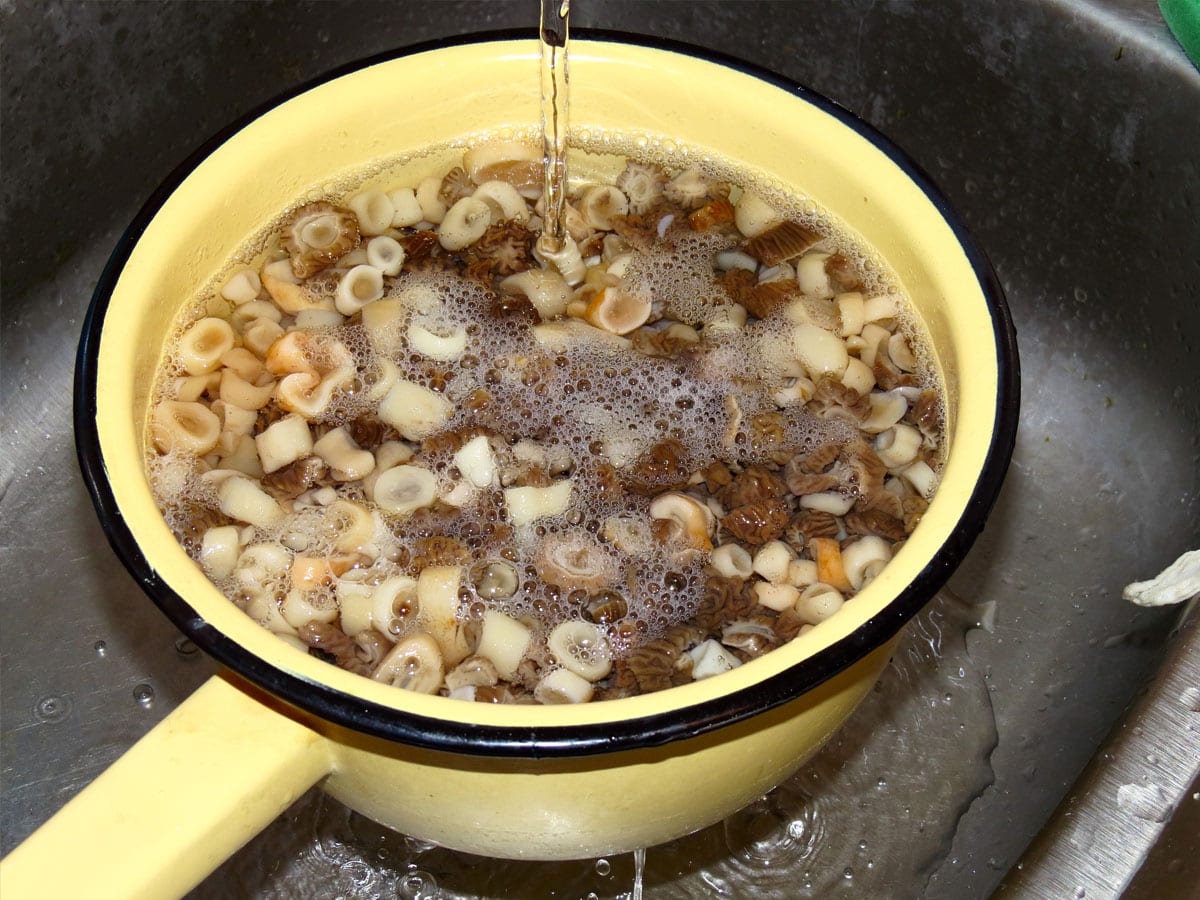
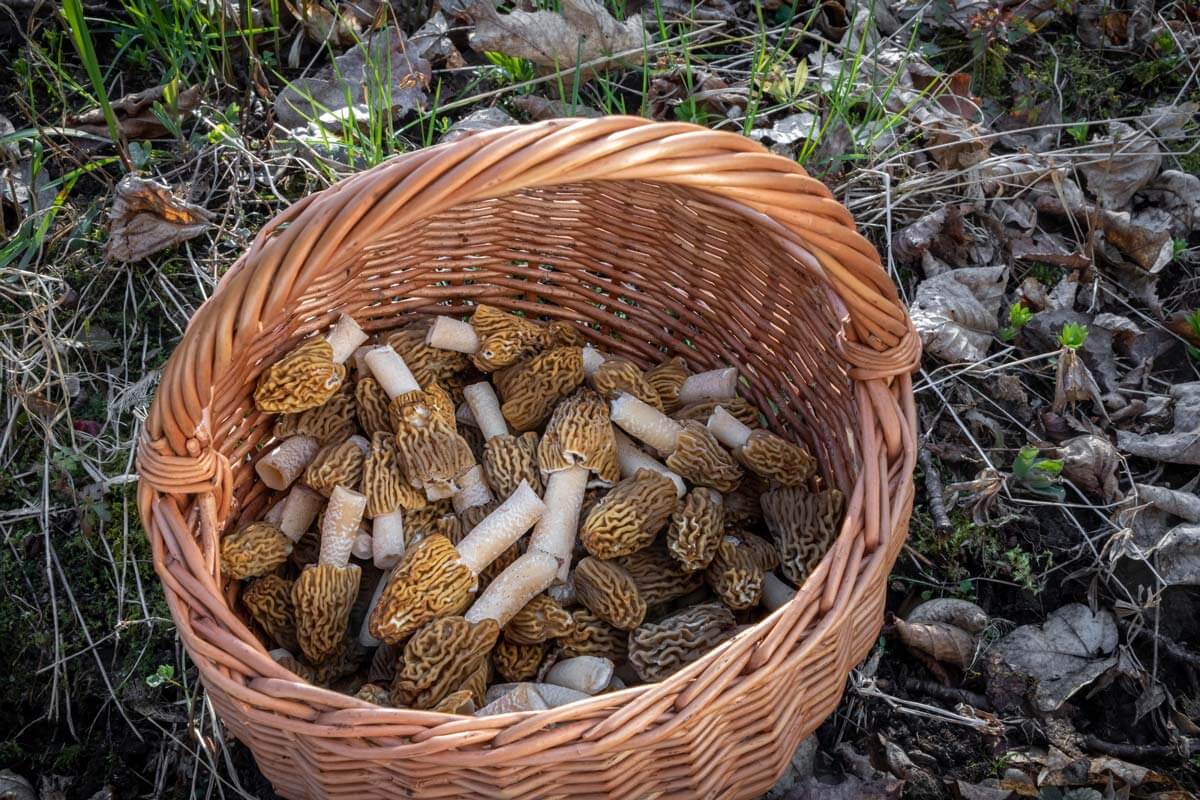
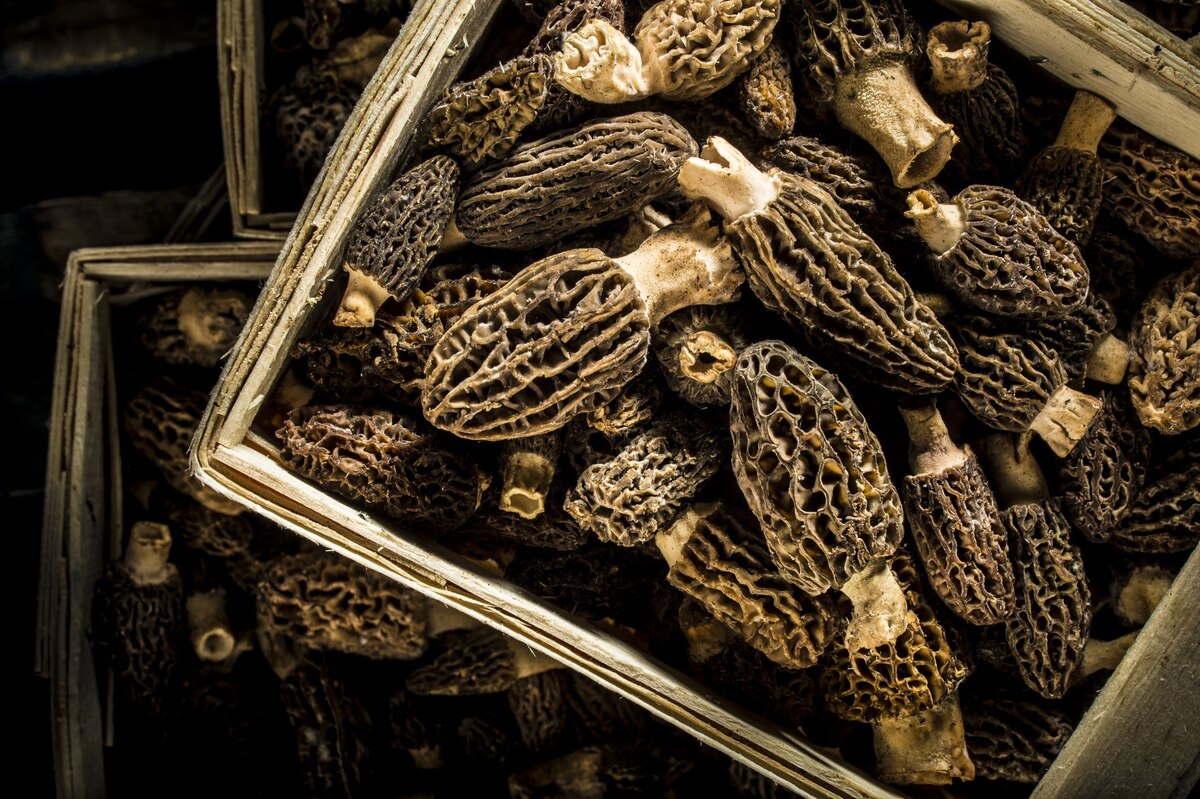



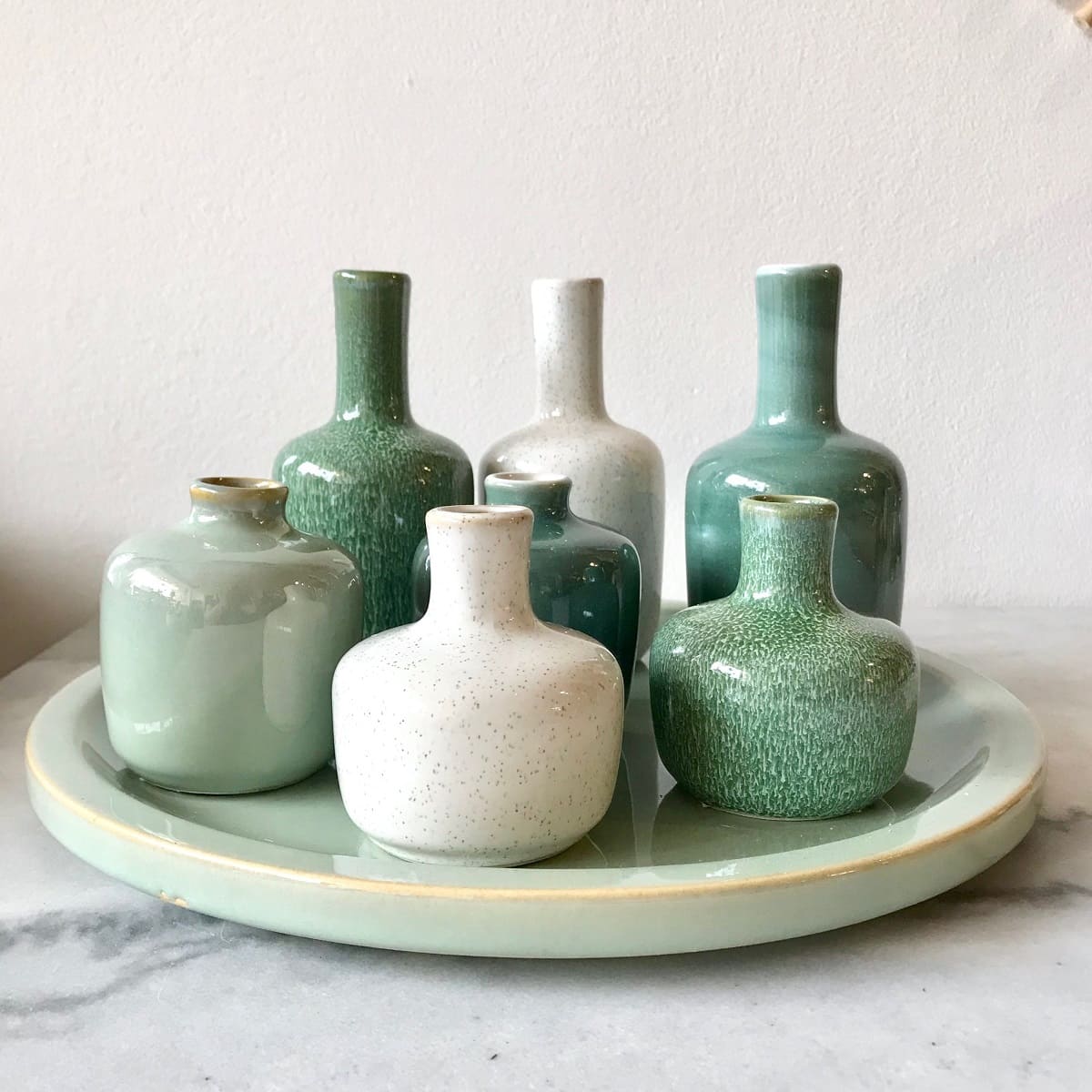
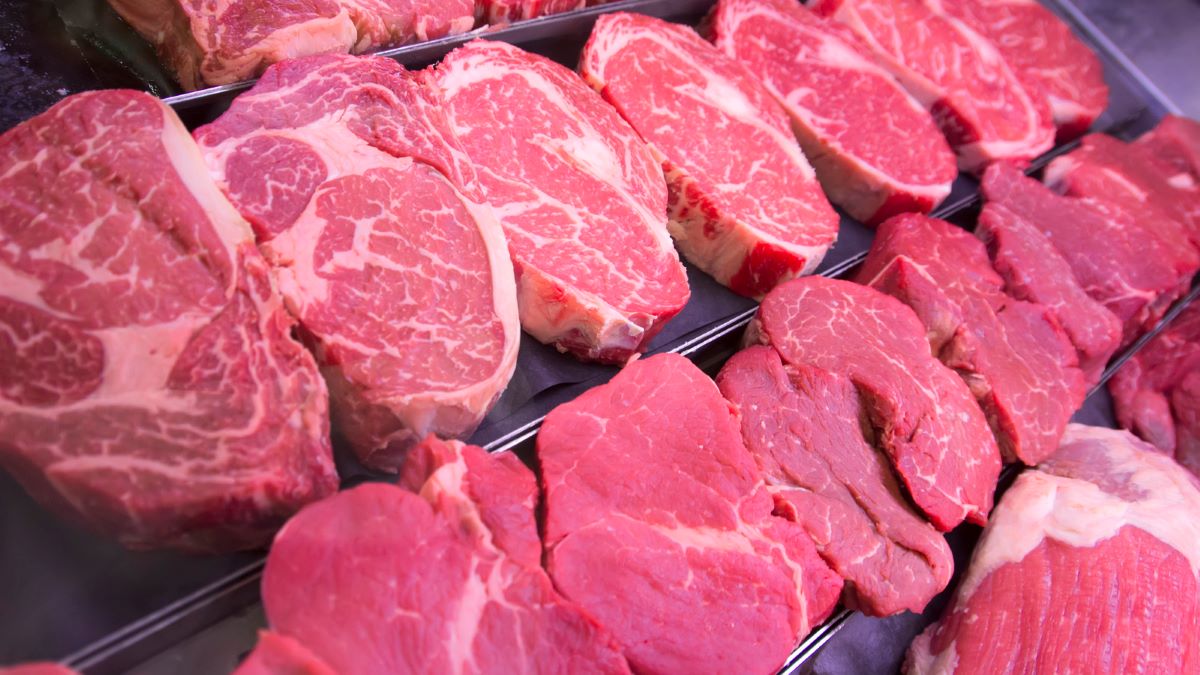

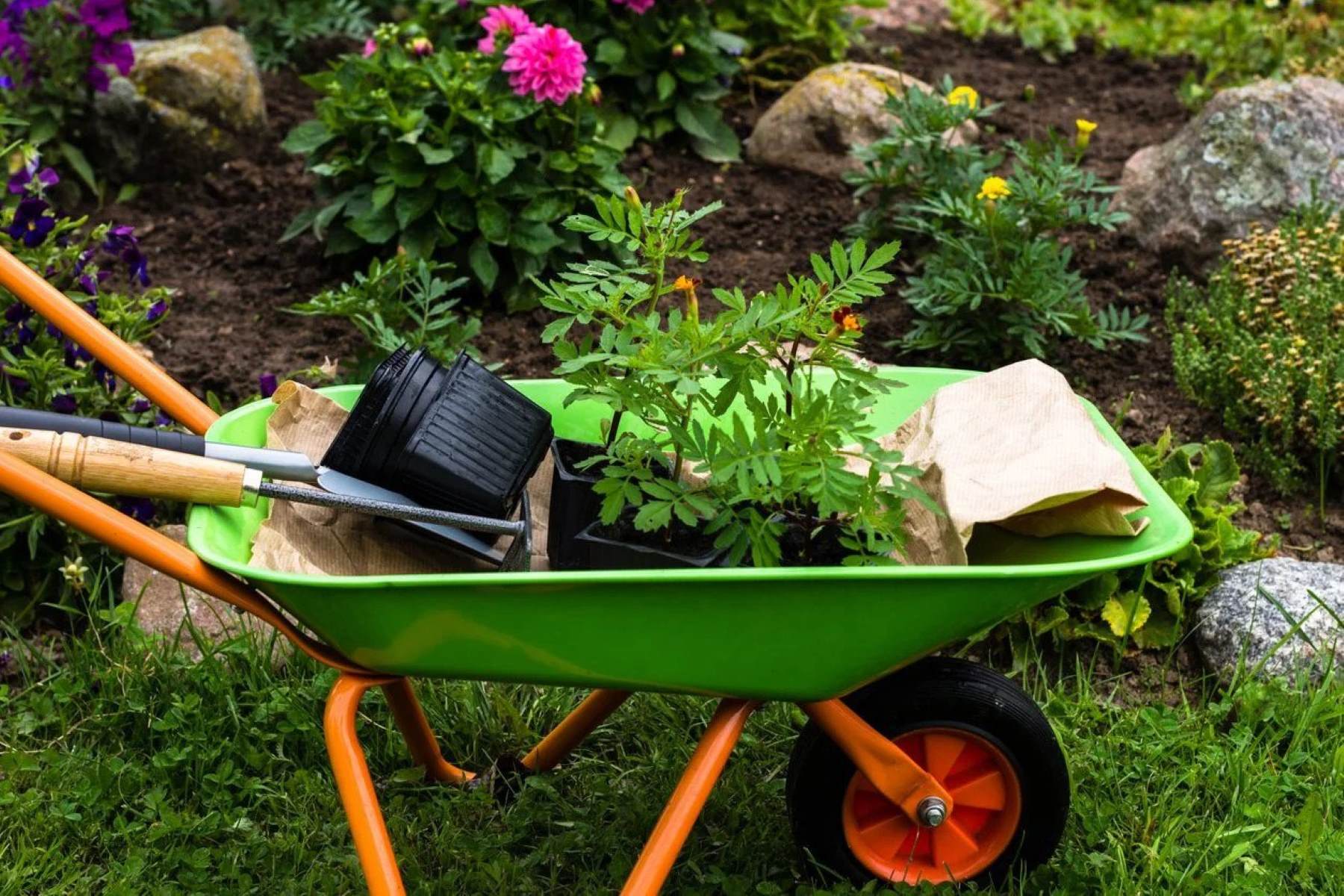


0 thoughts on “How To Store Morels”